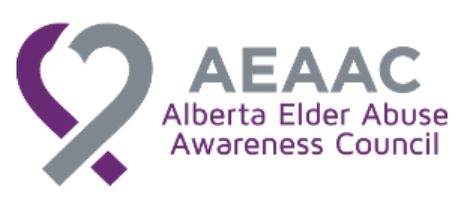- Details
- Published: 06 February 2018
By Jennifer Nguyen
In multicultural countries, such as Canada, discussions about elder abuse must take into account the diverse nature of its population and the differences that can arise between different ethno-cultural groups. Recent literature on the subject has found that elder abuse is more prevalent, but also more often unreported within minority and non-Caucasian groups (Grant & Benedet, 2016). This blog post looks at how different factors such as culture, tradition, and legislation affect reporting or even discourage older adults from seeking help in abuse situations. While this post focuses primarily on the Chinese-Canadian community, and also discusses the Latin-American community, I believe these themes can be aptly applied to a number of groups.
A theme that runs through all cultural groups is dependence. There is a rich body of literature that discusses how dependence is a powerful factor that contributes to an increased risk of elder abuse. While financial, physical, and emotional dependence always results in a power imbalance, in elder abuse situations this is heightened. Moreover, studies about the causes of elder abuse identify a “web of mutual dependency” between the abuser and the older victims (Bonnie & Wallace, 2003). This dependency has invariable effects for adults that are experiencing elder abuse; they are often more fearful to address the mistreatment.
Elder abuse rates are also higher in visible minority groups and non-Caucasian race is often associated with increased risk for elder abuse. Research also found that this risk is heightened for older women (Lai et al., 2014). While women are more likely to seek informal means of help such as mediation and internal family resolutions, they are often limited by their dependence on their spouses and adult children.
A 2014 review of literature and research on elder abuse in minority groups found two main factors that contribute to underreporting of elder abuse in the Chinese-Canadian community (Lai et. al., 2014): first, the effects of a traditional culture and family roles, and secondly, the increased dependence as a result of the statutory imposition of dependence through ten-year sponsorship programs. In cases of parents and grandparents, the sponsorship obligation extends for 20 years from the date that the family member becomes a permanent resident. Lai et al. (2014) found that Chinese-Canadian women were particularly concerned with saving face, and maintaining family cohesion and harmony, as they are essential to traditional Chinese culture.
These findings were echoed in a study of attitudes toward elder mistreatment in the United States. By conducting interviews with five focus groups, African American seniors, older English-speaking Latinos, older Spanish-speaking Latinos, older non-Latino Whites, as well as African American caregivers for older adults, the study found common themes that arose in their discussion of elder mistreatment. The study focused on the themes that emerged in answers to the following questions: (1) What factors contributed to elder abuse; (2) What was elder abuse; and, (3) What factors affected the reporting of the abuse. While many of the answers are universally applicable such as dependence, familial discouragement, and fear of losing independence, the study also found that monolingual Latinos emphasized machismo, which is the expectation of male domination in Latin culture. This sentiment is similar to Lai et al.’s (2014) finding that Chinese culture’s emphasis of a male-dominated culture discouraged female victims to seek help. It is also similar to a similar study that compared Korean American attitudes to African-American and Caucasian American attitudes (Moon & Williams, 1993).
Other factors that all these studies have homed in on, are the effect that a lack of English proficiency and unfamiliarity with western culture has on reporting abuse. Not only are the victims not always able to communicate about their abuse, but they also they may not know of existing support and reporting mechanisms.
Policy Considerations for the Future
It is important that future policy decisions address the specific challenges that older adults from different cultures may encounter while dealing with elder abuse. An important change that I believe should be made is to increase culturally appropriate education and training for service providers so they are cognizant of the different needs of older people of different cultures. This might include a shift towards more neutral terminology to describe elder abuse. Lai et al (2014) notes that, “service providers should be sensitive to stigma and shame associated with elder abuse within certain communities and reluctance to discuss personal matters outside the family” and, “should use culturally acceptable and familiar terms (e.g. the term "abuse" may be unfamiliar or taboo).”
In the meantime changes like making resources available in multiple languages can help bridge the language and communication barriers in current elder abuse support mechanisms. Furthermore connections with cultural and community centres can increase awareness of resources in a setting that is more familiar with the older adults.
References
Bonnie R. J. & Wallace R. B. (2003). Elder mistreatment : abuse, neglect, and exploitation in an aging America. Washington, DC: The National Academies Press.
Enguidanous, S. M, Deliema, M., Aguilar, I., Lambrinos J., & Wilber K. H. (2014). Multicultural voices: attitudes of older adults in the United States of America about elder mistreatment. Ageing and Society, 34(1), 877-903.
Grant I. & Benedet J. (2016). The Sexual Assault of Older Women: Criminal Justice Responses. McGill Law Journal, 62(1), 41-78.
Moon A. & Williams O. (1993). Perceptions of elder abuse and help-seeking patterns among African-American, Caucasian American, and Korean-American elderly women. The Gerontologist, 33(3), 386-395.
W.L. Lai, D., Daoust G., & Li L. (2014). Understanding elder abuse and neglect in aging Chinese immigrants in Canada. The Journal of Adult Protection, 16(5), 322-334.

















